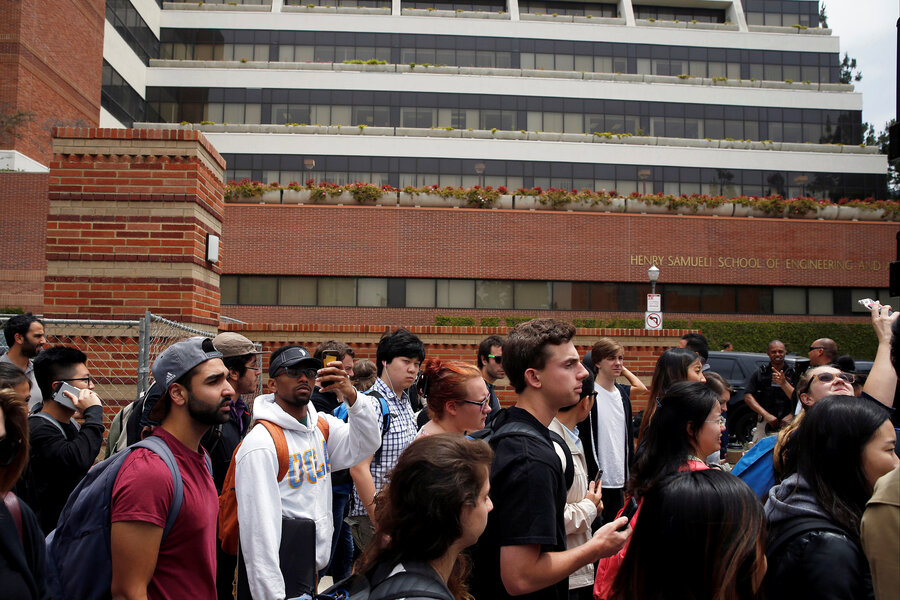What the UCLA shooting says about American gun violence
Loading...
While University of California, Los Angeles students were taking final exams Wednesday, cell phones began buzzing with the school warning of an active shooter on campus and sparking fears of yet another indiscriminate mass shooting.
In the end, the worst fears were not realized. No mass shooting occurred. But the UCLA tragedy is indicative of a more pervasive, and often underreported kind of violence, involving a shooter who apparently knew the victim.
Two people were killed in the apparent murder-suicide: a shooter who has been identified as Mainak Sarkar and his former UCLA engineering professor William Klug, a father of two. [Editor's note: This paragraph has been updated to reflect the name of the shooter, released by police on Thursday morning.]
“He was without a doubt the kindest professor in the UCLA MAE department,” Joseph Lee, a former student of Klug’s, posted on Facebook. “I remember in his MAE101 class, he would always begin lecture with asking if anyone had questions. He took time to answer each one even if it meant scheduling time outside of class to get them answered. He had a genuine care for all of his students and wanted to see each one succeed.”
Jeremey Peschard is one of the thousands of students who spent hours sheltered in a classroom Wednesday. But for Mr. Peschard, the situation was all too familiar. Two years ago, Peschard spent hours on lockdown inside a dorm at UC Santa Barbara during a mass shooting that left six students dead and 13 wounded.
“I just felt a little bit less shocked, a little bit less taken aback by the reality of an active shooter on a college campus,” says Peschard. “Because I feel like this is the day and age we’re living in, that college campus shootings have genuinely become a normalized threat, almost like a natural disaster, except this type of destruction isn’t natural. It’s just really sad.”
But while mass shootings (defined as an incident that leaves four or more people dead or wounded) may feel almost commonplace to the American public, the majority of these shootings are on the smaller scale, with either one or zero fatalities, and involve previous relationships, not random assault.
However, it is cases like San Bernardino, Calif., and Charleston, Va., last year and Virginia Tech in 2007 – cases with assault weapons, radicalized shooters, seemingly random targets – that catch the media’s attention.
“Some researchers say events such as San Bernardino could serve as leverage to tackle the broader problem of gun violence. New research, driven by concern over public mass shootings, could help find solutions for the more common – albeit less alarming – shootings that pockmark everyday American life…” write the Monitor’s Jessica Mendoza and Henry Gass. “Because although violent crime in the US has declined over the past two decades, America remains among the worst countries in the world for gun deaths outside of conflict zones: Gunfire fatalities in the US since 1968 outnumber American casualties in all the wars in the country’s history.”
Because of the heightened frequency of mass shootings, on both the large and small scales, preventative campaigns on gun safety have also increased.
In honor of National Gun Violence Awareness Day on June 2, advocates of gun safety are wearing orange “to show their support for common sense solutions that will save lives,” explains the Wear Orange campaign.
“My objective is to take tragedies like this, to take the public’s fear and sense of helplessness, and have the public transmute those things into action,” Garen Wintemute, director of the Violence Prevention Research Program at the University of California, Davis, tells The Monitor in response to the San Bernardino shooting. “While not minimizing at all the tragedy that has the nation riveted at the moment, we’re trying to point out that these tragedies are part of a far larger problem about which we know far too little, and about which we do far too little.”
This report contains material from the Associated Press.








